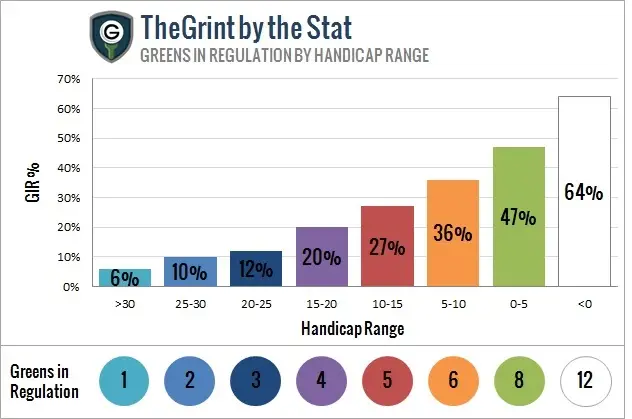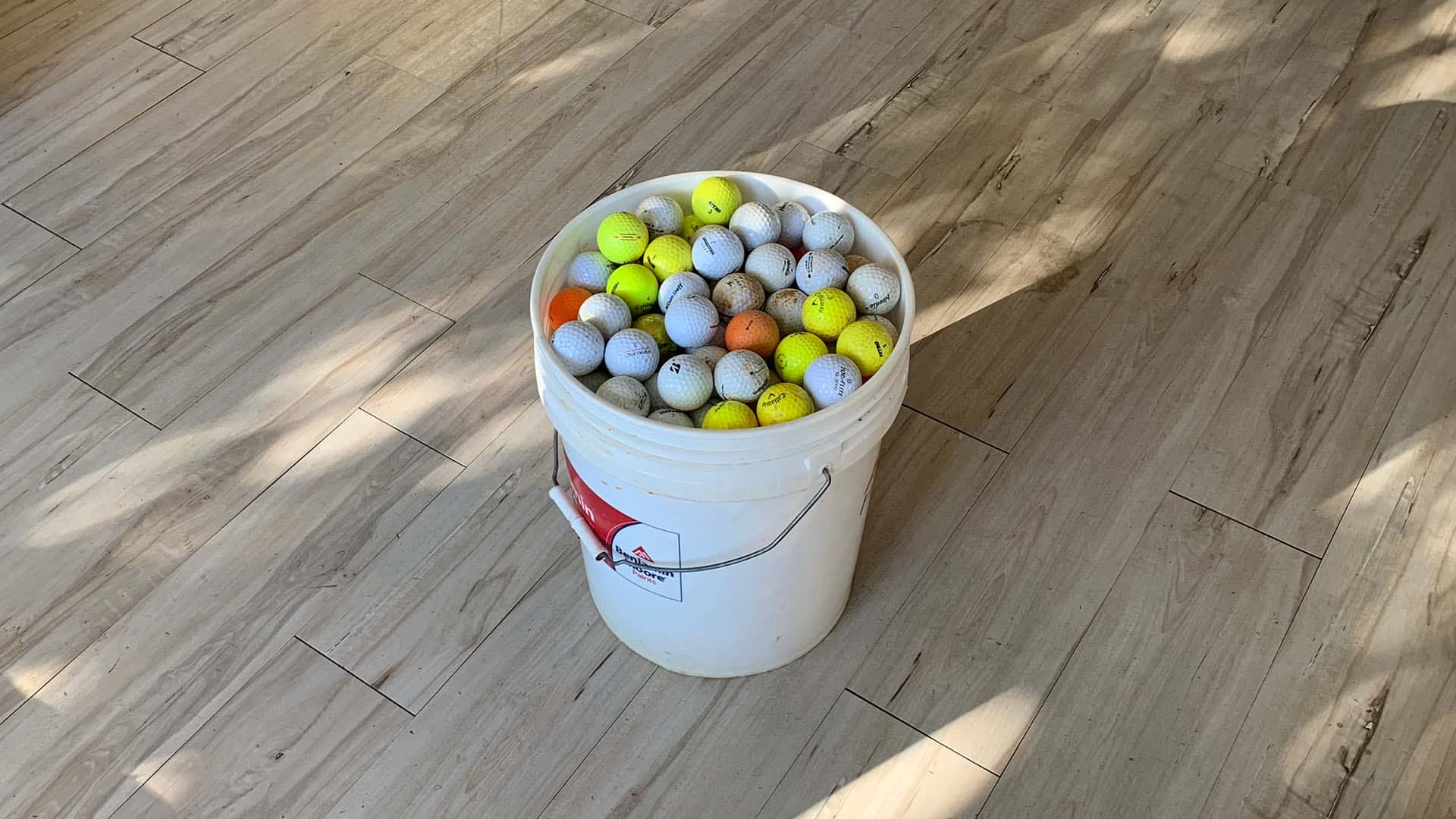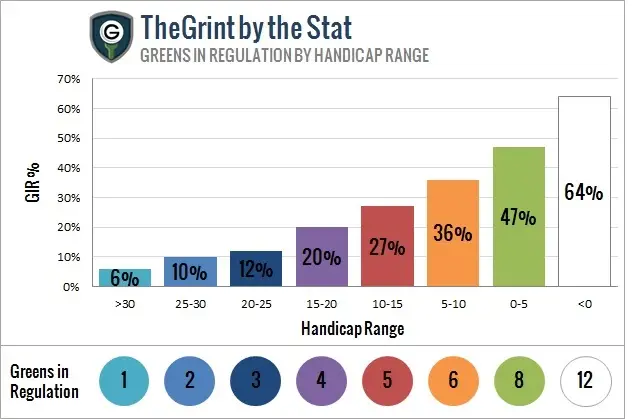
I. Introduction
Green in Regulation (GIR) is a statistic that measures the number of times a golfer hits the green in regulation on a par-3, par-4, or par-5 hole. A green in regulation is defined as a shot that lands on the green and is within two putts of the hole.
GIR is an important statistic because it is a measure of a golfer’s ability to hit the green in the fairway and avoid three-putts. Golfers who have a high GIR are typically better players than those who have a low GIR.
II. What is GIR?
GIR is a statistic that measures the number of times a golfer hits the green in regulation on a par-3, par-4, or par-5 hole. A green in regulation is defined as a shot that lands on the green and is within two putts of the hole.
GIR is calculated by taking the number of greens hit in regulation and dividing it by the total number of holes played. For example, if a golfer hits 10 greens in regulation out of 18 holes, their GIR would be 10 / 18 = .56.
III. How is GIR calculated?
GIR is calculated by taking the number of greens hit in regulation and dividing it by the total number of holes played. For example, if a golfer hits 10 greens in regulation out of 18 holes, their GIR would be 10 / 18 = .56.
IV. What is the average GIR for golfers of different skill levels?
The average GIR for golfers of different skill levels varies depending on the level of competition. For example, the average GIR for PGA Tour professionals is around 65%, while the average GIR for amateur golfers is around 35%.
V. How can I improve my GIR?
There are a number of things you can do to improve your GIR, including:
- Practice your short game
- Take lessons from a qualified instructor
- Use the right clubs for the distance
- Hit down on the ball
- Avoid taking too much club
VI. What are the benefits of having a high GIR?
There are a number of benefits to having a high GIR, including:
- You will score lower
- You will have more birdie opportunities
- You will be less likely to make bogeys or worse
VII. What are the drawbacks of having a low GIR?
There are a few drawbacks to having a low GIR, including:
- You will score higher
- You will have fewer birdie opportunities
- You will be more likely to make bogeys or worse
VIII. GIR and scoring
GIR is a key factor in scoring well in golf. A high GIR will help you to score lower and avoid big numbers.
IX. GIR and course management
GIR can also be used to help you with course management. For example, if you know that you have a high GIR, you can take on more risk on certain holes.
X. FAQ
What is the difference between GIR and FIR?
FIR stands for fairway in regulation. It is a statistic that measures the number of times a golfer hits the fairway on a par-3, par-4, or par-5 hole. A fairway in regulation is defined as a shot that lands on the fairway within two club lengths of the edge of the fairway.
GIR and FIR are closely related, but they are not the same thing. A golfer can hit the fairway in regulation but not the green in
| Keyword | Feature |
|---|---|
| green in regulation | A golf shot that lands on the green and is within two putts of the hole. |
| golf | A sport played on a course with 18 holes, each with a tee box, fairway, green, and hole. |
| scoring | The number of strokes a golfer takes to complete a hole or a round of golf. |
| short game | The part of golf that involves shots from around the green, including chips, pitches, and putts. |
| wedge | A golf club with a loft of between 48 and 64 degrees, used for shots from around the green. |
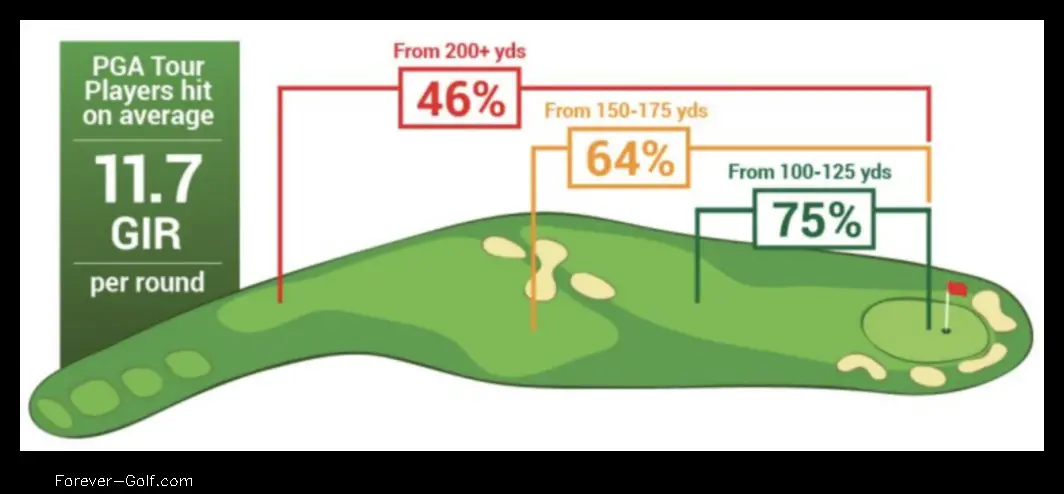
What is GIR?
GIR stands for “greens in regulation”. It is a measure of how often a golfer hits the green in regulation on a par 3, 4, or 5 hole. A green in regulation is defined as a putt that is within 2 putts of the hole.
GIR is an important statistic because it measures a golfer’s ability to hit the green and make par. Golfers who have a high GIR are typically better players than golfers who have a low GIR.
GIR is calculated by taking the number of greens in regulation a golfer hits and dividing it by the total number of par 3, 4, and 5 holes played. For example, if a golfer hits 10 greens in regulation out of 18 holes, their GIR would be 10/18 = .56.
The average GIR for golfers of different skill levels is as follows:
- Professional golfers: 65%
- Low handicap golfers: 55%
- Average golfers: 45%
- High handicap golfers: 35%
GIR is a valuable statistic for golfers to track because it can help them identify areas of their game that need improvement. If a golfer has a low GIR, they may need to work on their accuracy off the tee or their short game.
GIR is also a good way to compare your performance to other golfers. If you are consistently hitting more greens in regulation than your playing partners, it is a sign that you are a better golfer.
How is GIR calculated?
GIR is calculated by dividing the number of greens you hit in regulation by the total number of holes you played. For example, if you hit 10 greens in regulation out of 18 holes, your GIR would be 10 / 18 = .56.
GIR is a valuable statistic because it measures your ability to hit the green from the tee box. The higher your GIR, the better your chances of scoring well.
There are a few things you can do to improve your GIR. First, make sure you are using the right clubs for the distance you are trying to hit. Second, practice your swing so that you can consistently hit the ball on the target line. Third, work on your course management skills so that you are taking the right club for the shot.
GIR is a key statistic that can help you improve your golf game. By following these tips, you can increase your GIR and lower your scores.
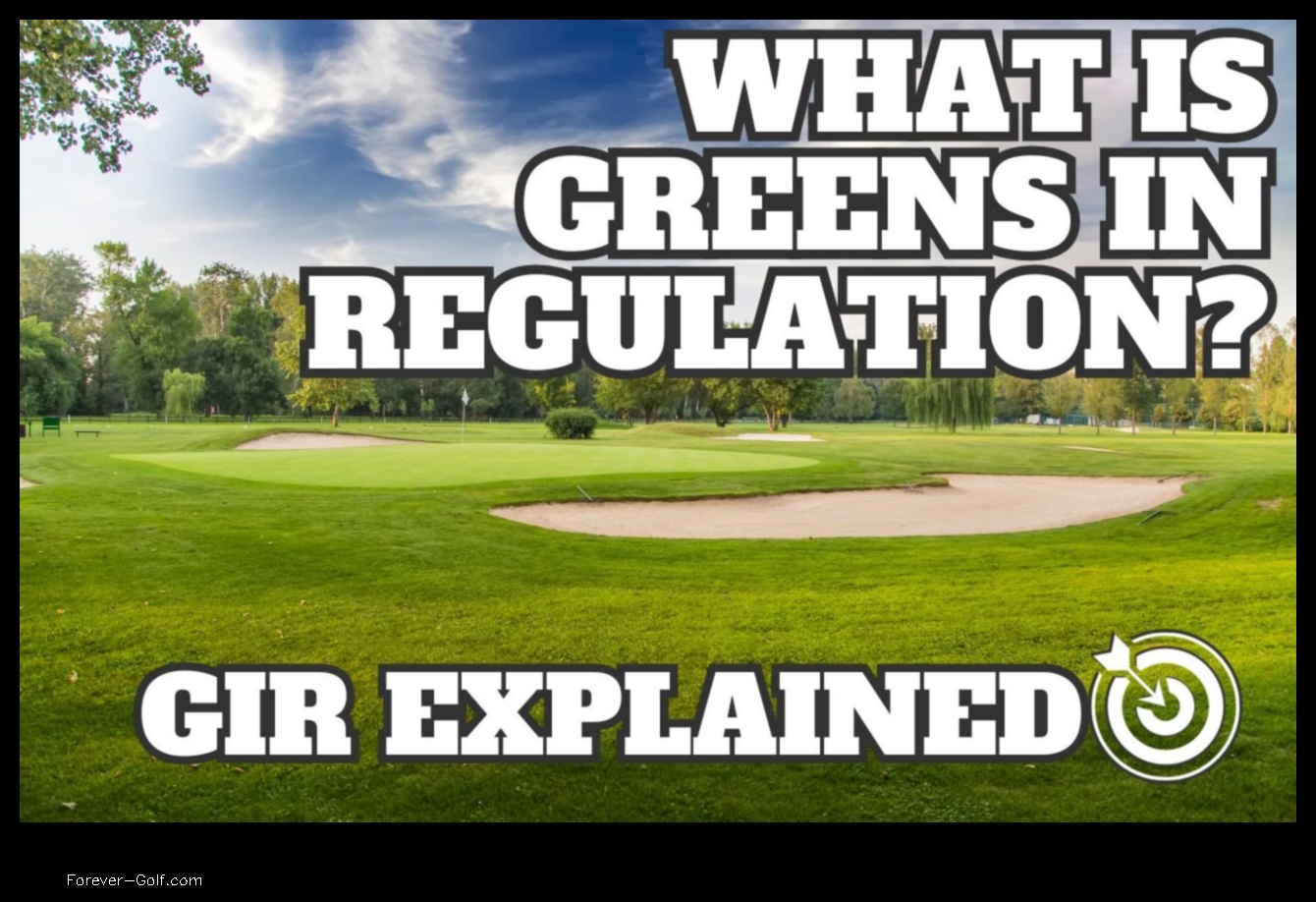
What is GIR?
GIR stands for “greens in regulation”. It is a measure of how often a golfer hits the green in regulation on a par 3, par 4, or par 5 hole. A green in regulation is defined as a putt that is within 2 putts of the hole.
GIR is an important statistic because it measures a golfer’s ability to hit the green and make a putt. A high GIR means that a golfer is hitting the green more often, which leads to lower scores.
GIR is calculated by dividing the number of greens in regulation by the total number of holes played. For example, if a golfer plays 18 holes and hits 12 greens in regulation, their GIR would be 12 / 18 = .67.
The average GIR for golfers of different skill levels is as follows:
- Professionals: 65%
- Low handicappers: 55%
- High handicappers: 40%
GIR can be improved by practicing your short game and making sure that you are taking enough club on your approach shots.
How can I improve my GIR?
There are a number of things you can do to improve your GIR, including:
Practice your short game. The short game is the most important part of golf, and it’s often the difference between making a par and a bogey. Make sure you’re practicing your chipping and putting regularly, and focus on developing a consistent stroke.
Use the right clubs. The right club for the right shot will help you get the ball closer to the green. Take the time to learn which clubs you hit best, and use them accordingly.
Manage your course. Pay attention to the pin placement and the wind conditions, and choose the right club for the shot. Don’t be afraid to lay up if you’re not sure you can reach the green in two.
Be patient. It takes time to improve your GIR, so don’t get discouraged if you don’t see results immediately. Just keep practicing, and you’ll eventually start to see improvement.
Here are some additional tips for improving your GIR:
Take your time on the tee box. Don’t rush your tee shot, and make sure you’re taking the club that you’re most comfortable with.
Focus on hitting the ball solidly. A solid strike will give you the best chance of getting the ball close to the green.
Follow through on your swing. A good follow through will help you generate more power and accuracy.
Don’t be afraid to take a mulligan. If you hit a bad shot, don’t be afraid to take a mulligan and try again. This will help you save strokes and improve your GIR.
What is GIR in golf?
GIR stands for “green in regulation”. It is a statistic that measures the number of times a golfer hits the green in regulation on a par 3, par 4, or par 5 hole. A green in regulation is defined as a shot that lands on the green and is within two putts of the hole.
GIR is an important statistic because it is a measure of a golfer’s accuracy and distance control. Golfers who have a high GIR are typically better at hitting the ball close to the hole, which leads to lower scores.
The average GIR for golfers of different skill levels is as follows:
- Professional golfers: 65%
- Low handicap golfers: 55%
- High handicap golfers: 45%
GIR is a statistic that golfers can use to track their progress and identify areas where they need to improve. If you are a golfer who is looking to lower your scores, one of the best things you can do is focus on improving your GIR.
VII. What are the drawbacks of having a low GIR?
There are a few drawbacks to having a low GIR. First, it can lead to higher scores. If you are not hitting the green in regulation, you will have to take more shots to get the ball into the hole, which will increase your score. Second, a low GIR can also lead to more bogeys and double bogeys. If you are not hitting the green in regulation, you are more likely to miss the green and have to chip or pitch back up to the hole. This can be a difficult shot to make, and it can lead to a high score. Third, a low GIR can also lead to more lost balls. If you are not hitting the green in regulation, you are more likely to hit your ball into the rough or the woods. This can make it difficult to find your ball, and it can lead to a penalty stroke.
GIR and scoring
GIR is a key indicator of scoring potential in golf. A high GIR means that you are hitting more greens in regulation, which leads to shorter putts and lower scores. Conversely, a low GIR means that you are missing more greens in regulation, which leads to longer putts and higher scores.
The average GIR for golfers of different skill levels is as follows:
- Professional golfers: 65%
- Low handicap golfers: 55%
- Average golfers: 45%
- High handicap golfers: 35%
As you can see, the average GIR increases as the skill level of the golfer increases. This is because more skilled golfers are able to hit the ball more accurately and consistently, which leads to more greens being hit in regulation.
If you are looking to improve your scoring in golf, one of the best things you can do is focus on improving your GIR. This will lead to shorter putts and lower scores, which will help you to shoot lower rounds of golf.
IX. GIR and course management
GIR is an important statistic for golfers to track, as it can help them to identify areas of their game that need improvement. However, it is also important to consider how GIR fits into the overall strategy of a golf course.
Some golf courses are designed to be more forgiving, with wider fairways and shorter greens. This makes it easier for golfers to hit GIRs, but it also means that they are more likely to make bogeys or worse if they miss the green.
Other golf courses are designed to be more challenging, with narrower fairways and longer greens. This makes it more difficult for golfers to hit GIRs, but it also means that they are more likely to make birdies or eagles if they do hit the green.
The type of golf course that a golfer is playing on will affect how they should approach their strategy. On a forgiving course, golfers may be more aggressive and take more risks in order to hit GIRs. On a challenging course, golfers may be more conservative and take fewer risks in order to avoid making bogeys or worse.
Ultimately, the best course management strategy is the one that allows a golfer to score the lowest possible score. This means that golfers should consider the type of golf course that they are playing on and adjust their strategy accordingly.
Q: What is GIR?
A: GIR stands for “greens in regulation.” It is a measure of how often a golfer is able to hit the green in two shots from the fairway.
Q: How is GIR calculated?
A: GIR is calculated by dividing the number of greens hit in regulation by the total number of holes played.
Q: What is the average GIR for golfers of different skill levels?
A: The average GIR for golfers of different skill levels is as follows:
- Professional golfers: 65%
- Low handicap golfers: 55%
- High handicap golfers: 40%
- Where Was the First Topgolf in the English Language - April 5, 2024
- Topgolf Back Net Distance How Far Is It - April 5, 2024
- Top Golf Where to Find the Best Golf Experiences Outside of the U.S. - April 5, 2024
